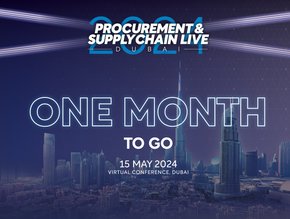A timeline of digital transformation in supply chain

Digital transformation timeline: 1940s
Digitisation’s debut Claude Shannon, the father of modern digital communications theory, publishes a groundbreaking article, ‘A Mathematical Theory of Communication’, and, in so doing, paves the way for digitalisation. Scientific knowledge grows at a phenomenal pace, but few books have had as lasting an impact or played as important a role in our modern world as this one, published originally as a paper on communication theory more than 50 years ago. It has gone through four hardcover and sixteen paperback printings, and is a revolutionary work.
Digital transformation timeline: 1950s
Chips and transistors The microchip – and today’s most widely used semiconductor transistor – are invented, meaning analogue computing can go digital for the first time. The pioneers of microchip technology are Jack Kilby and Robert Noyce. In 1959, Kilby of Texas Instruments received a US. patent for 'miniaturised electronic circuits', and Noyce – of Fairchild Semiconductor Corporation – received a patent for 'a silicon-based integrated circuit'.
Digital transformation timeline:
Pre-dawn of the Internet The first ever message is sent over ARPANET, the first packet-switched network to use the TCP/IP protocol, and a precursor of the Internet. In the early 1960s, Paul Baran, working for the US think tank, Rand Corporation, developed the concept of 'distributed adaptive message block switching'. This allowed small groups of data to be sent along differing paths to a destination. This idea eventually became packet communication, which underlies almost all data communication today.
Digital transformation timeline: 1970s
Home computing Home PCs and computer games mark the widespread availability of computer technology, and, on the work front, this sees a profusion of data entry roles, as firms look to digitise their data. Home computers were microcomputers that entered the market in 1977, and became common during the 1980s. They were marketed to consumers as affordable and accessible. For the first time, computers were intended for the use of a single – and non-technical – user. As a mark of the huge impact on society, influential German electronica band, Kraftwerk, released an album dedicated to home computing, 'Computer World'.
Digital transformation timeline: 1980s/90s
World Wide Web British computer scientist Tim Berners-Lee invents the World Wide Web, a communication system first developed by US colleges. The Web was conceived and developed to meet the demand for automated information-sharing between scientists in universities and institutes around the world. Following the development, automation in the workplace begins to take hold.
Big-business transformations Digital transformation as we know it today – a strategic approach rather than technological upgrade – was first defined in 2015 by Deloitte’s research on the most successful adoptions of digital transformation at the time. From that point onwards, organisations have been backing up their digital ambitions by upskilling teams and reshaping company culture to view digital transformation as an ongoing effort instead of a one-off project.






